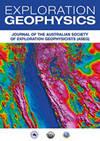Convolutional neural network-based moment tensor inversion using domain adaptation for microseismicity monitoring
IF 0.8
4区 地球科学
Q4 GEOCHEMISTRY & GEOPHYSICS
引用次数: 1
Abstract
Microseismic monitoring is widely used to analyze the locations and growth directions of fractures formed at sites of hydraulic fracturing treatment and CO2 geologic sequestration. Because moment tensors can provide focal mechanisms, moment tensor inversion has received considerable attention in microseismic monitoring; the real-time processing of moment tensor inversion is important for rapid decision-making. Pre-trained machine learning (ML) models can make nearly instantaneous predictions in the application stage and thus present an attractive alternative to real-time processing. However, prior information regarding the velocity model at the target site is a prerequisite for generating the dataset used to train the ML model that is applied in moment tensor inversion. In addition, it is difficult to create the training dataset because it requires three-dimensional numerical modelling when the velocity model is complex; numerous simulations must be executed for sources with various locations and moment tensors. To overcome these limitations, we applied the domain adaptation technique to the convolutional neural network (CNN)-based moment tensor inversion method, which uses peak amplitudes and arrival times of P- and S-waves as input features. The CNN model was pre-trained with the dataset generated from a homogeneous velocity model. Then, in the domain adaptation stage, the pre-trained model was fine-tuned along with the target dataset. To validate the performance of the domain adaptation, moment tensors from both horizontal and tilted three-layer models were predicted. In each case, the domain-adapted model performance was similar to the performances of the CNN-based models that had been trained using the dataset generated with the exact target velocity models.基于域自适应卷积神经网络的矩张量反演微震监测
微地震监测被广泛用于分析水力压裂处理和CO2地质封存现场形成的裂缝的位置和生长方向。由于矩张量可以提供震源机制,矩张量反演在微震监测中受到了相当大的关注;矩张量反演的实时处理对于快速决策具有重要意义。经过预训练的机器学习(ML)模型可以在应用阶段进行几乎即时的预测,因此为实时处理提供了一种有吸引力的替代方案。然而,关于目标位置的速度模型的先验信息是生成用于训练应用于矩张量反演的ML模型的数据集的先决条件。此外,很难创建训练数据集,因为当速度模型复杂时,它需要三维数值建模;必须对具有不同位置和矩张量的源执行大量模拟。为了克服这些限制,我们将域自适应技术应用于基于卷积神经网络(CNN)的矩张量反演方法,该方法使用P波和S波的峰值振幅和到达时间作为输入特征。使用均匀速度模型生成的数据集对CNN模型进行预训练。然后,在领域自适应阶段,预训练的模型与目标数据集一起进行微调。为了验证域自适应的性能,预测了水平和倾斜三层模型的矩张量。在每种情况下,适用于领域的模型性能与使用精确目标速度模型生成的数据集训练的基于CNN的模型的性能相似。
本文章由计算机程序翻译,如有差异,请以英文原文为准。
求助全文
约1分钟内获得全文
求助全文
来源期刊

Exploration Geophysics
地学-地球化学与地球物理
CiteScore
2.30
自引率
0.00%
发文量
33
审稿时长
>12 weeks
期刊介绍:
Exploration Geophysics is published on behalf of the Australian Society of Exploration Geophysicists (ASEG), Society of Exploration Geophysics of Japan (SEGJ), and Korean Society of Earth and Exploration Geophysicists (KSEG).
The journal presents significant case histories, advances in data interpretation, and theoretical developments resulting from original research in exploration and applied geophysics. Papers that may have implications for field practice in Australia, even if they report work from other continents, will be welcome. ´Exploration and applied geophysics´ will be interpreted broadly by the editors, so that geotechnical and environmental studies are by no means precluded.
Papers are expected to be of a high standard. Exploration Geophysics uses an international pool of reviewers drawn from industry and academic authorities as selected by the editorial panel.
The journal provides a common meeting ground for geophysicists active in either field studies or basic research.
 求助内容:
求助内容: 应助结果提醒方式:
应助结果提醒方式:


